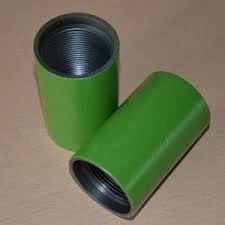- Afrikaans
- Albanian
- Amharic
- Arabic
- Armenian
- Azerbaijani
- Basque
- Belarusian
- Bengali
- Bosnian
- Bulgarian
- Catalan
- Cebuano
- Corsican
- Croatian
- Czech
- Danish
- Dutch
- English
- Esperanto
- Estonian
- Finnish
- French
- Frisian
- Galician
- Georgian
- German
- Greek
- Gujarati
- Haitian Creole
- hausa
- hawaiian
- Hebrew
- Hindi
- Miao
- Hungarian
- Icelandic
- igbo
- Indonesian
- irish
- Italian
- Japanese
- Javanese
- Kannada
- kazakh
- Khmer
- Rwandese
- Korean
- Kurdish
- Kyrgyz
- Lao
- Latin
- Latvian
- Lithuanian
- Luxembourgish
- Macedonian
- Malgashi
- Malay
- Malayalam
- Maltese
- Maori
- Marathi
- Mongolian
- Myanmar
- Nepali
- Norwegian
- Norwegian
- Occitan
- Pashto
- Persian
- Polish
- Portuguese
- Punjabi
- Romanian
- Russian
- Samoan
- Scottish Gaelic
- Serbian
- Sesotho
- Shona
- Sindhi
- Sinhala
- Slovak
- Slovenian
- Somali
- Spanish
- Sundanese
- Swahili
- Swedish
- Tagalog
- Tajik
- Tamil
- Tatar
- Telugu
- Thai
- Turkish
- Turkmen
- Ukrainian
- Urdu
- Uighur
- Uzbek
- Vietnamese
- Welsh
- Bantu
- Yiddish
- Yoruba
- Zulu
Understanding Bull Plugs and Their Role in Various Industries
Understanding Bull Plugs A Comprehensive Guide
Bull plugs, a term often associated with both agricultural practices and specialized industrial applications, refer to unique types of plugs used in various contexts. The name might conjure up images of farm equipment, but the functionality of bull plugs extends into diverse industries, including plumbing, electrical work, and construction. This article aims to explore what bull plugs are, their uses, and the materials from which they are typically made.
What is a Bull Plug?
At its core, a bull plug is a specific kind of closure device designed to seal off pipes, fittings, or other openings. The design helps prevent the escape of fluids or gases, thereby maintaining system integrity. Bull plugs are particularly noteworthy in the context of their application in scenarios requiring a dependable seal under high pressure or varied environmental conditions.
The term bull plug is often identified in various industries, possessing different names or variants based on their specific functions. For instance, in plumbing, a bull plug might be used to seal a pipe temporarily or permanently. In electrical applications, bull plugs might relate to strain relief methods for cables or wires, preventing damage or wear over time.
Applications of Bull Plugs
1. Plumbing In plumbing systems, bull plugs are instrumental in sealing off ends of piping systems. They are used during construction to prevent dust and debris from entering open ends, or as final fixtures when sections of piping need to be sealed off. This is particularly important in ensuring that water or other fluids are contained within the desired conduit without leaks.
2. Electrical Systems Bull plugs can also be relevant in electrical work, where they serve as terminating devices for cable ends, preventing moisture ingress and protecting electrical connections from damage. They ensure that the integrity of the electrical system is maintained, reducing the chances of short circuits or other electrical failures.
what is bull plug

3. Industrial Applications In various industrial settings, bull plugs can seal large valves or pipes as part of safety protocols. During maintenance processes or emergency situations, bull plugs play a vital role in containing hazardous materials and preventing leaks that could lead to environmental hazards or safety incidents.
Materials Used for Bull Plugs
Bull plugs can be constructed from various materials, which are chosen based on the environment and conditions they need to withstand. Common materials include
- Metal Stainless steel and other corrosion-resistant alloys are often used for applications that require durability and long-term performance. Metal bull plugs are favored in high-pressure situations due to their strength.
- Plastic For applications that do not involve high pressure or extreme temperatures, plastic bull plugs can be an economical and lightweight alternative. Materials such as PVC and polypropylene are common, providing adequate sealing capabilities while being cost-effective.
- Rubber and Elastomers In applications where flexibility and provide additional sealing functions are required, rubber bull plugs are used. They can accommodate variations in pressure and temperature while providing reliable seals.
Conclusion
Bull plugs may not be the most discussed hardware, but their importance within various industries cannot be overstated. Whether facilitating plumbing systems, maintaining electrical safety, or contributing to industrial operations, the role of bull plugs is pivotal. Their design and material composition are tailored to ensure dependable sealing solutions, safeguarding against leaks, spills, and unintended disruptions. Understanding bull plugs enhances our appreciation for the intricate components that allow everyday systems to function smoothly, reinforcing the idea that even the smallest parts can have substantial impacts.
-
Well Casing Extension Couplings – Applications and InstallationNewsJun.06,2025
-
Types of Crossover Subs in Drilling & CompletionNewsJun.06,2025
-
Key Features of High-Quality Tubing Pup JointsNewsJun.06,2025
-
Installation and Maintenance Tips for Steel Couplings for PipeNewsJun.06,2025
-
How to Select the Right Pup Joint for Oil & Gas OperationsNewsJun.06,2025
-
Applications of Stainless Steel Pipe CouplingsNewsJun.06,2025







